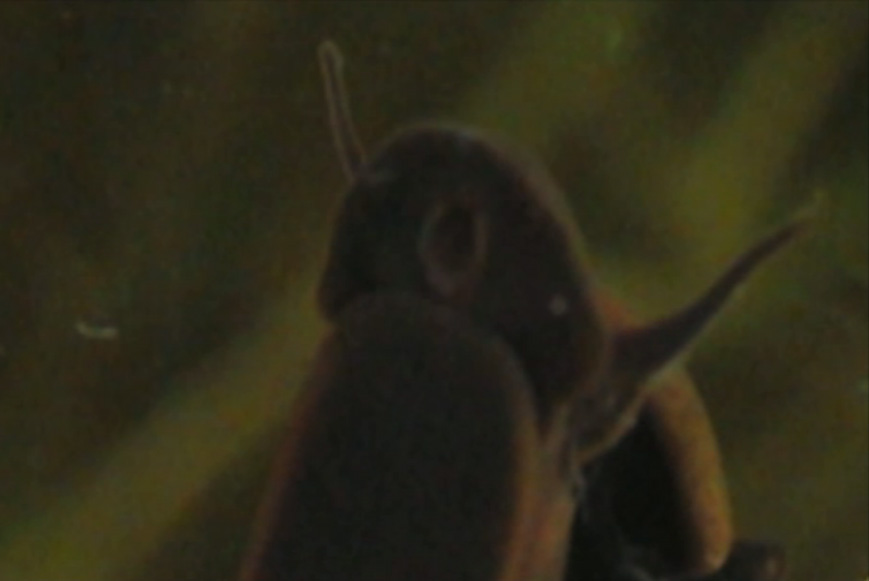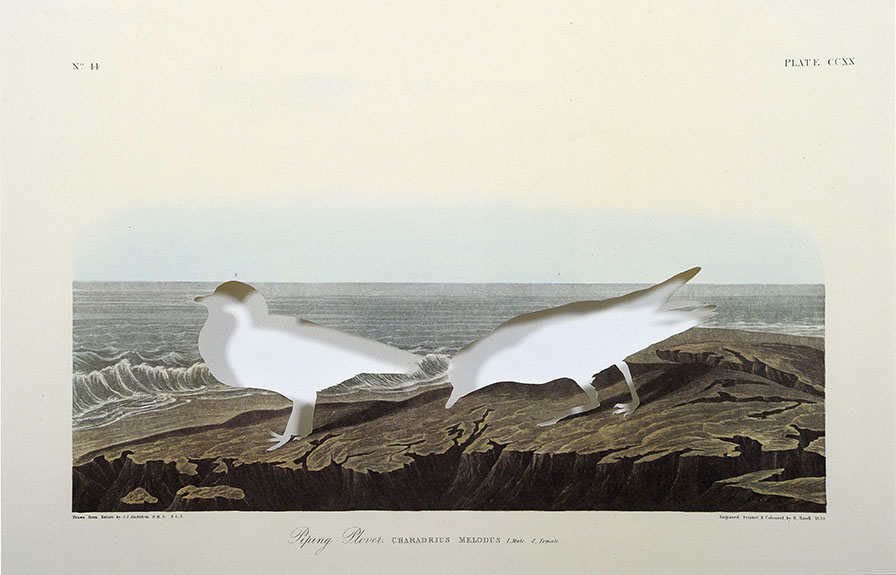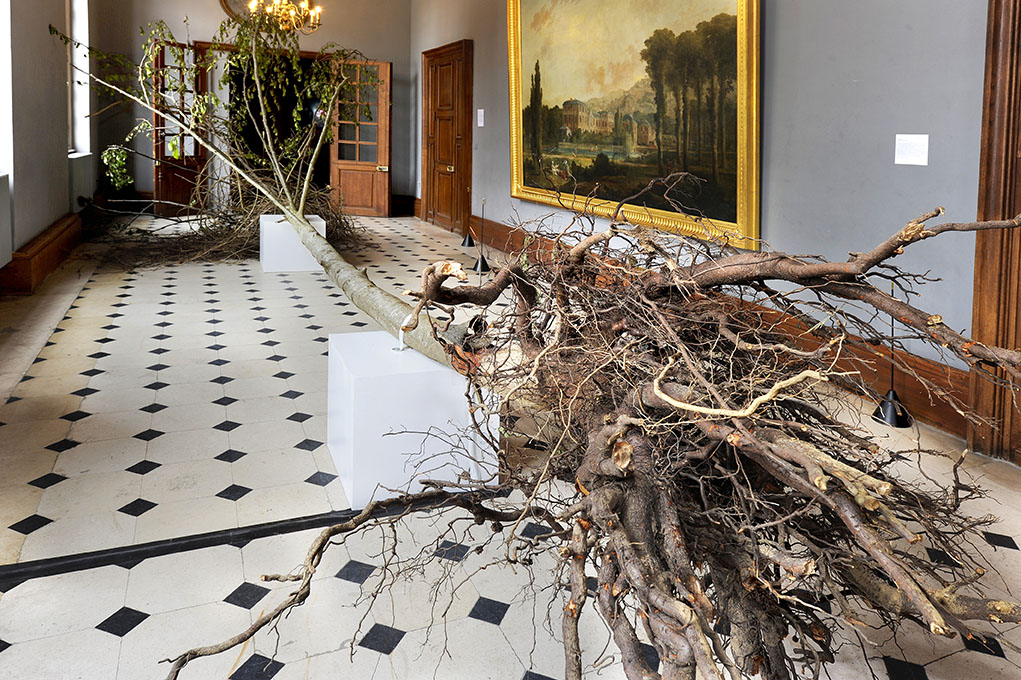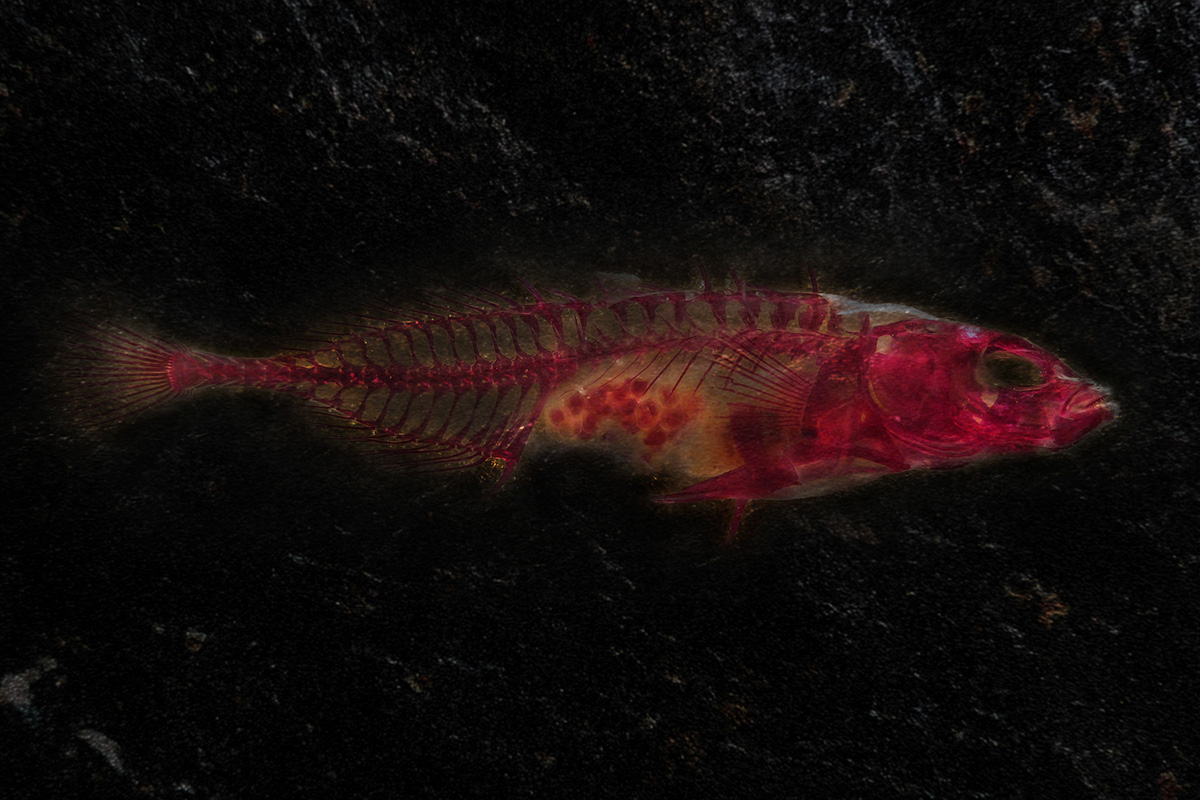 Curated by Hyewon Yi
Curated by Hyewon Yi
Lecture by Brandon Ballengée, Praeter Naturam: Biology Beyond Nature:
Tuesday, September 10, 2013, 7 – 8pm
Exhibition Walkthrough with Curator:
Wednesday, September 11, 2013, 11 am
Monday, September 30, 2013, 1 pm
Wednesday, October 2, 2013, 4 pm
Gallery Hours: Monday through Thursday 12 – 5pm and by appointment
Location: Amelie A. Wallace Gallery, Campus Center, Main Level, SUNY College at Old Westbury, Route 107, Old Westbury, New York 11568
The Amelie A. Wallace Gallery at SUNY College at Old Westbury is pleased to announce a new exhibition, Signs of Existence: Biotech Art, opening September 10, 2013. The exhibition explores a diverse range of creative approaches to transforming and manipulating the processes of life. These life-science artists explore living organisms ranging from human DNA samples to marine animal subjects, altering them through subversive use of biotechnological processes. In an age of molecular biology, stem cell research, and debates over genetically modified organisms, the rapid growth of experiments in biotechnology gives rise to corresponding endeavors among life-science artists. Biotechnology has opened the way to new artistic visions of the body, resulting in a growing convergence of science and art. Through their observations and experiments in their respective fields, the five artists in this exhibition raise issues of bioethics in a world in which new relationships between human and nonhuman subjects emerge and humankind struggles for dominance over natural forces.
This exhibition emphasizes three distinct themes within Bio Art. Heather Dewey-Hagborg and Paul Vanouse utilize DNA samples for their research, drawing attention to individual rights, genetic manipulation, commodification, and the paucity of regulation of biotechnology. Under current law, people have few rights to their bodily tissue and genetic material once they leave their bodies. DNA, which provides more personal information than fingerprints, is highly vulnerable to discriminatory uses by employers, insurers, and the criminal justice system. These artists offer social commentary on genetic analysis while their methodology raises social concerns about discrimination and privacy. Brandon Ballengée and Helen J. Bullard expand upon their interests in the health of complex ecosystems. Ballengée issues a call for conservation of amphibian and avian species threatened by human activity and environmental changes. His methods are diagnostic of each species’ situation within its ecosystem. Bullard researches the complex relationship between the Atlantic horseshoe crab and biomedicine and the pharmaceutical industry. Despite their exploitation by industry, horseshoe crabs survive and return to nature. Soyo Lee’s “artistic intervention,” A Dying Art, concerns anatomical human specimens preserved at the Mütter Museum of the College of Physicians of Philadelphia. Historical artifacts of human remains at such “medical” museums used for educational purposes suffer from neglect of maintenance. Lee proposed strategies to the museum officials that led to a yearlong collaboration between the artist and the institution, thus demonstrating the practicality of artistic institutional critique.
For this exhibition, Brandon Ballengée contributes two series of works. A Season in Hell Series: Deadly Born Cry, (2010-2012) portrays birds whose gift of flight has been taken away or never developed due to untimely death. The birds were mechanically altered in utero during laboratory experiments that prohibit wing (“limb”) development. The series also pictures young birds that for unknown reasons were found dead in their nests. Malamp: The Occurrence of Deformities in Amphibians (ongoing since 1996) represents a central praxis of Ballengée’s artworks¾the decline in numbers and potential causes of deformities among amphibian populations. A result of collaboration with other researchers and members of the public, Malamp uses two modes of representation. The first, Reliquaries (ongoing since 2001), is a series of large photographic prints of frog specimens whose terminal deformities are attributed to ecological imbalance in nature. These individual portraits, scaled to the size of a human toddler, serve as memorials. The second mode of representation, Styx (ongoing since 2007¾the title is taken from the Greek mythological river that separates the world of the living from the realm of the dead), is a sculptural installation of actual frog specimens illuminated through glass dishes against dark backgrounds. These tiny specimens were chemically cleared and stained first. Through his biological specimens turned aesthetic expressions, Ballengée links ethical engagement to heart-rending beauty.
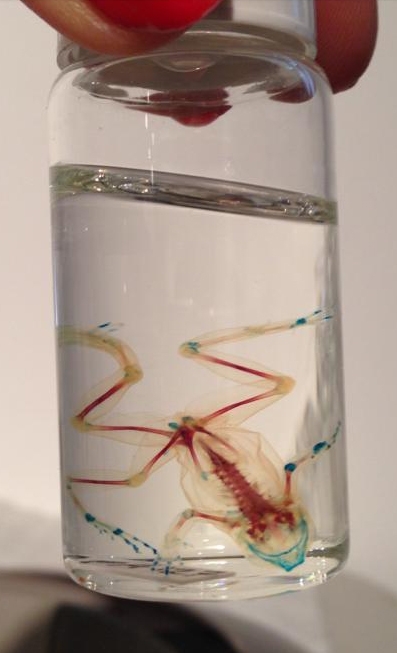
Photograph by Hyewon Yi
Heather Dewey-Hagborg presents her latest ongoing project, Stranger Visions, lifelike masks of human faces based on DNA extracted from hair, chewing gum, and cigarette butts discarded in public places. Using a computer program she created to decode gender, eye color, and facial traits from DNA samples, Dewey-Hagborg created her life-size heads on a 3-D printer. Employing PCR (Polymerase Chain Reaction), the artist studied regions of genomes that vary from person to person, what are called SNPs (Single Nucleotide Polymorphisms). Feeding the information through her custom computer program, she acquires data on physical traits such as gender, eye-color, hair color/baldness, hair texture, complexion, and the tendency to obesity. Dewey-Hagborg’s project contributes to studies of face morphology, generic surveillance, genome-wide association studies, and forensic DNA phenotyping. Her method calls attention to threats to our privacy, as leaving traces as simple as a shed hair can provide a stranger with clues to our identities. This exhibition also includes DNA Spoofing: DIY Counter-Surveillance, a video of the artist and friends swapping their generic material such as hair and nails. Just as tampering with Internet Protocols makes anonymous Internet browsing possible, DNA spoofing enables one to conceal one’s identity. In this way, the work offers some DIY techniques for counteracting genetic surveillance.
Helen J. Bullard presents Blood Oath, a vignette forming part of the larger research project, Blue Blood, an investigation into the relationships and environments of the Atlantic horseshoe crab. The focus of the project is on the complex connections these animals share with biomedicine and the pharmaceutical industry. In 1970, an extract found in horseshoe crab blood was licensed for use in testing the safety of vaccines, and has since become the most reliable agent in detecting pyrogens and endotoxins. The extract is also used ubiquitously by intravenous drug manufacturers due to its natural ability to clot upon the introduction of bacteria. All intravenous drugs contain it. This licensing was the turning point that signaled the mass closures of the then prevailing (but far less reliable) rabbit labs. Most crabs survive this process and are returned, after recuperation, to their natural habitats.
Soyo Lee’s A Dying Art describes a series of artistic interventions on historical human anatomy specimens at the Mütter Museum of the College of Physicians of Philadelphia from April 2012 to March 2013. The Mütter Museum is one of the oldest historical medical museums in the United States, founded in 1863 by surgeon Thomas Dent Mütter for the purpose of providing a free educational resource to practitioners and students of medicine. The title of this project comes from the artist’s first impression of anatomical artifacts that were deteriorating due to lack of maintenance and public appreciation. As Lee learned of the Museum’s history and unique status as an open source for public engagement, she became concerned with conserving these fluid-preserved specimens. After studying the problems she observed, she proposed maintenance strategies to the Museum’s director and curators. Her proposals resulted in a yearlong collaboration between the artist and the Museum and a public exhibit on the conservation of fluid-preserved specimens that has been adopted for other types of artifacts at the Mütter Museum. This conservation project is also an example of the strategic use of human remains for artistic purposes.
Paul Vanouse’s Latent Figure Protocol Lightbox Instances selects a group of six lightboxes from the larger project, which takes the form of a media installation that uses DNA samples to create emergent representational images. Employing a reactive gel and an electrical current, Latent Figure Protocol produces images that reflect the DNA samples used. A kind of reverse molecular biology, Latent Figure Protocol utilizes known sequences in online databases to produce “planned” images that scientists would ordinarily use to determine an organism’s genetic sequence. Planning these images requires knowing what size DNA is required to move at the correct speed in each column of the image. DNA inserted into a 12-lane sequence gel at the bottom travels upward at varied speeds as voltage is applied to form the icon. Typically, the imaging process occurs only at the end of electrophoresis and often requires UV light protection, but Vanouse brings the imagining process of gel electrophoresis to the viewers naked eyes through a novel combination of non-hazardous DNA stain, blue light LEDs, and tinted acrylic filters. Vanouse challenges the fixed idea of “DNA fingerprinting”, misunderstood by the lay public as an unchanging sentence written by Mother Nature to correspond to each living creature. According to the artist, the DNA gel image is a cultural construct that is often naturalized. Vanouse challenges the eugenics notion of genetic destiny—the idea that DNA provides a template not only for our physiology but also for our status in society. This discredited concept has been revived over the past decade, particularly since the completion of the Human Genome Project. The images in Latent Figure Protocol cheekily address this determinist viewpoint by reproducing the subjects’ cultural iterations via their own DNA.
Artist Biographies
Brandon Ballengée is a visual artist, biologist, and environmental activist based in New York. Ballengée’s research interests include proximate causes for injury and developmental deformities among natural populations of amphibians in complex ecosystems; temporal and historic fluctuation in anuran injury and hind limb deformity ratios; health of anuran larvae as a potential diagnostic model of ecosystem health; the affectivity of limited to non-invasive field-techniques for monitoring amphibian populations; and the role that public volunteers (citizen scientists) can play in amphibian conservation efforts. Since 1996, a central investigation focus has been the occurrence of developmental deformities and population declines among amphibians. In 2001, he was nominated for membership into Sigma Xi, The Scientific Research Society. In 2009, Ballengée and SK Sessions published “Explanation for Missing Limbs in Deformed Amphibians” in the Journal of Experimental Zoology and received international media attention from the BBC and others. This scientific study was the inspiration for the book Malamp: The Occurrence of Deformities in Amphibians. Since 2009, Ballengée has continued his amphibian research as a visiting scientist at McGill University (Canada). In 2011, he was awarded a conservation leadership fellowship from the National Audubon Society’s TogetherGreen Program. Recent solo exhibitions of Ballengée’s work have been held at Ronald Feldman Fine Arts, (2012, USA); Longue Vue House and Gardens (2011, USA); Parco Arte Vivente, Centro d’Arte Contemporanea (2010, Italy); Shrewsbury Museum (2009, England); Yorkshire Sculpture Park (2008, England); Yale University’s Peabody Museum of Natural History (2007, USA) among others. His works have been included in several international biennales and festivals, including Geumgang Nature Art Biennale (2004, South Korea); Venice Biennale (2005, Italy); and Biennale for Electronic Arts Perth (2007, Australia) Currently, he is co-founding an urban bio-art laboratory in his midtown Manhattan studio while finalizing his Ph.D. through a collaborative program between the University of Plymouth (England) and Hochschule für Gestaltung Zürich (Switzerland).
Helen J. Bullard is a New York-based British artist and storyteller whose research focuses on animals. Bullard tells stories about animals, sometimes anecdotal, sometimes scientific, sometimes discordant, but always strange. Projects such as Touching the Whale and Blue Blood have focused on interspecies habitats, encroachments, and friction between cultures. Media have included written form, installation, video, sound, spoken word, and code based media. She has worked as an events organizer and gallery coordinator, and is currently teaching assistant to Professor Kathy High at Rensselaer Polytechnic Institute in Troy, New York where she is pursuing an MFA in Electronic Arts. In 2009, Bullard was commissioned to organize the conference Pidgin Langue: Animals, Birds and Us to coincide with her solo show Animus Flux. Funded research has included the study of migration in Bulgaria’s Burgas Wetlands near the Black Sea, and a loon study in the Orkney Islands. Residencies have included the University of Gothenburg; the Department of Experimental Psychology, University of Cambridge; Lighthouse Digital Culture Agency, and University College London (UCL). She has been published/broadcast in Art and Research, Caught by the River, Radio Animal, and Nature Calls, Resonance FM, London, and is a member of the Advisory Board for Antennae: The Journal of Nature in Visual Culture. Her forthcoming work, After the Run, will be exhibited in March 2014 at EMPAC (Experimental Media and Performing Arts Centre), New York.
Heather Dewey-Hagborg is an information artist interested in exploring art as research and public inquiry. Traversing media ranging from algorithms to DNA, her work questions the fundamental assumptions underpinning perceptions of human nature, technology, and the environment. Examining culture through the lens of information, Heather creates situations and objects embodying concepts, probing for reflection and discussion. She has shown work internationally at events and venues that include the Poland Mediations Bienniale, Jaaga Art and Technology Center in Bangalore, and the Monitor Digital Festival in Guadalajara. She has exhibited nationally at PS1 MOMA, the New Museum, Eyebeam, Clocktower Gallery, 92Y Tribeca, Issue Project Room, Splatterpool in New York City, Grounds for Sculpture in New Jersey, and CEPA Gallery in Buffalo. In addition to her individual work, she has collaborated with the collective Future Archaeology and with video artist Adriana Varella. Her work has been reported in the New York Times, Wall Street Journal, the Times of London, Il Sole 24 Ore, Science Magazine, and Time Out New York, on television on the BBC World Service, ZDF in Germany, CNN, Dan Rather Reports, and Fuji Television in Japan, on the radio on Public Radio’s Studio 360, and CBS News, among many others. Dewey-Hagborg has a BA in information arts from Bennington College and a Master’s degree from the Interactive Telecommunications Program at Tisch School of the Arts, New York University. She is currently a Ph.D. student in electronic arts at Rensselaer Polytechnic Institute.
Soyo Lee is an artist and researcher based in Seoul, Korea, who works with biological materials in the context of fine art. Her work emphasizes direct engagement with the aesthetic and social contexts of biological materials in their site-specific conditions. Soyo has performed artistic interventions at the Mütter Museum of the College of Physicians of Philadelphia, the Hunterian Museum at the Royal College of Surgeons of England, the Center for Biotechnology and Interdisciplinary Studies, Rensselaer Polytechnic Institute and the National Horticultural Research Institute, South Korea. Since 2009, Lee has exhibited at events and venues that include the Microwave International New Media Arts Festival, Hong Kong; ISEA 2012, Albuquerque; Exit Art, New York; The Verbeke Foundation, Kemzeke, Belgium; Retort Art Space, Amsterdam; Quartair Contemporary Art Initiatives, The Hague; and Cais Gallery, Seoul. She has published in scholarly journals that include The Biophysical Journal and Acoustic Space. Lee is also a member of the Center for PostNatural History, Pittsburgh since 2007. She has received media attention from ARTE TV, Leonardo Reviews, NRC Handelsblad, and Ad!dict Magazine. She holds a BFA in Visual Arts from the Korean National University of Arts, and has recently earned a Ph.D. at the Department of the Arts, Rensselaer Polytechnic Institute with a dissertation titled Aesthetics of Fluid-Preserved Animal and Human Bodies: an Example of Research-Based Art, which deals with the contemporary aesthetic value of historical fluid-preserved human and animal specimens created and used for Western medicine.
Working at the crossroads of genetics and art, Paul Vanouse has been creating interdisciplinary installations since 1990. His work has been exhibited widely in the United States and at international venues, including the Museo Nacional de Bellas Artes in Buenos Aires, Argentina; the Louvre in Paris; and the TePapa Museum in Wellington, New Zealand. He is featured in the book Information Arts by Stephen Wilson, and his work has been funded by the Pennsylvania Council on the Arts, The New York State Council on the Arts, The New York Foundation for the Arts, and the Heinz Foundation, among others. Vanouse is a Professor of Visual Studies at the University at Buffalo, NY. He has been a Senior Artist at Banff Center, Alberta, Canada (2011), Foreign Expert at Sichuan Fine Arts Institute, China (2006), Honorary Research Fellow at SymbioticA, University of Western Australia (2005), Visiting Scholar at the Center for Research and Computing in the Arts, UC San Diego (1997), and Research Fellow at the Studio for Creative Inquiry, Carnegie Mellon University (1997-2003). He holds a BFA from the University at Buffalo (1990) and an MFA from Carnegie Mellon University (1996). For the past decade, Vanouse has been concerned with forcing the arcane codes of scientific communication into a broader cultural language. In The Relative Velocity Inscription Device (2002), he traces DNA from his Jamaican-American family members to explore the relationship between early twentieth century eugenics and late twentieth century human genomics. The double entendre of race highlights the obsession with “genetic fitness” within these historical endeavors. Similarly, his more recent projects, “Latent Figure Protocol,” “Ocular Revision,” and “Suspect Inversion Center,” use techniques from molecular biology to challenge “genome-hype” and to confront issues surrounding DNA fingerprinting. Recent large-scale solo exhibitions include Schering Foundation in Berlin (2011), Kapelica Gallery in Ljubljana (2011), Muffathalle in Munich (2012), and Beall Center at UC Irvine, California (2013). His work has been discussed in Art Journal, Art Papers, Art News, Flash Art International, Leonardo, New Scientist, New Art Examiner, New York Times, as well as numerous academic books on art and technology.
For directions to the College, see the link here. For a map, please click here.
For further information about the exhibition, please contact Gallery Director Hyewon Yi at yih@oldwestbury.edu. Please visit our gallery Facebook page or follow us on Twitter.
Amelie A. Wallace Gallery, Campus Center, Main Level, SUNY College at Old Westbury
Route 107, Old Westbury, New York 11568 tel: 516.876.3056/2709, 646.421.5863 fax: 516.876.4984. www.oldwestbury.edu. e-mail: yih@oldwestbury.edu. amelieawallacegallery@gmail.com.










